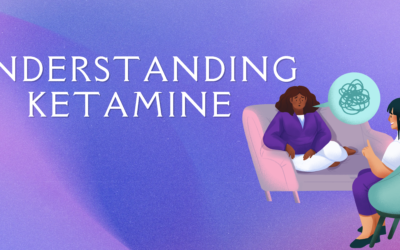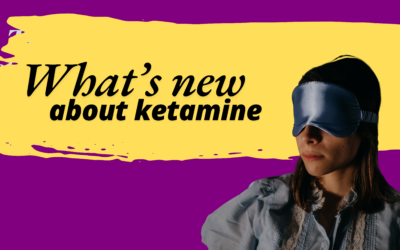Understanding the K-Hole: A Medical and Clinical Perspective on Ketamine
Ketamine, originally developed as an anesthetic, has become a widely discussed topic in both medical and recreational contexts. While ketamine’s medical applications, particularly in pain management and treatment-resistant mental health disorders like depression and PTSD, have garnered substantial attention, its potential to induce a “K-hole” has raised concerns both in clinical settings and in recreational use. This blog will delve into what a K-hole is, why it occurs, and its implications for medical and therapeutic uses of ketamine.
What is a K-Hole?
A “K-hole” is a term primarily used in recreational contexts to describe the dissociative state induced by high doses of ketamine. In this state, users often experience intense hallucinations, out-of-body experiences, and a profound sense of detachment from reality. Many people describe this sensation as being trapped in a different dimension or losing control of their body, which can be disorienting and sometimes frightening. The experience typically occurs when someone takes a dose of ketamine higher than what would typically be prescribed or administered in a controlled medical setting.
Ketamine and its Mechanism of Action
To understand why a K-hole occurs, it is essential to explore how ketamine works on a neurological level. Ketamine primarily acts as an antagonist of the N-methyl-D-aspartate (NMDA) receptor, which plays a significant role in regulating glutamate, the brain’s most abundant excitatory neurotransmitter. By blocking the NMDA receptor, ketamine reduces the transmission of excitatory signals, leading to a range of effects depending on the dose and method of administration.
- Low doses: Ketamine produces mild dissociation, pain relief, and in therapeutic settings, it may improve symptoms of depression or anxiety.
- Moderate doses: The dissociation becomes more pronounced, potentially leading to sensory distortions and time dilation.
- High doses: This is where the risk of falling into a K-hole increases, characterized by extreme dissociation, loss of body control, and vivid hallucinations.
The K-Hole in Medical Contexts
In medical and clinical settings, ketamine is typically administered in carefully controlled doses, often intravenously or orally, under the supervision of trained professionals. For example, ketamine therapy for treatment-resistant depression, PTSD, and chronic pain is administered at sub-anesthetic doses, usually far below the levels that could induce a K-hole. However, understanding the K-hole phenomenon is still important in clinical contexts for several reasons:
- Dose Management: Medical professionals need to carefully manage ketamine doses to ensure patients do not experience unwanted dissociation. In certain cases, a mild dissociative state is desirable, as it can promote introspection and help patients access buried emotions or traumas, which can be therapeutic. However, extreme dissociation (i.e., a K-hole) can be counterproductive, leading to fear or anxiety during or after treatment.
- Patient Safety: In rare cases where higher doses are needed—such as in acute pain management or anesthesia—patients might experience more significant dissociation. Medical practitioners must be vigilant about patient safety, as individuals in a K-hole may become confused, disoriented, or agitated, which could lead to self-harm if not properly monitored.
- Differentiating Therapeutic Dissociation from K-Hole: In therapeutic settings, patients may experience a controlled form of dissociation, which can help with mental healing and processing. It’s crucial for clinicians to explain to patients the difference between therapeutic dissociation and the more intense, often frightening experience of a K-hole, reassuring them about the controlled nature of their treatment.
- Why Does a K-Hole Occur?
A K-hole typically results from a higher-than-necessary dose of ketamine, whether administered intravenously, intramuscularly, or orally. Recreational users often take ketamine in quantities far exceeding what would be recommended in medical settings, increasing the likelihood of intense dissociation. However, even in therapeutic contexts, there is variability in individual response to ketamine, meaning some patients may be more prone to extreme dissociative experiences at lower doses.
Some factors that can increase the likelihood of a K-hole include:
- Rapid administration: In clinical settings, ketamine is typically administered slowly to allow for gradual dissociation. Fast administration can overwhelm the brain’s ability to adapt, increasing the likelihood of an intense dissociative episode.
- Pre-existing mental health conditions: Patients with certain psychiatric disorders, such as schizophrenia or severe anxiety, may be more vulnerable to the unsettling dissociation of a K-hole.
- Set and setting: Much like with other psychedelic or dissociative drugs, the mindset of the individual and the environment in which ketamine is administered play crucial roles. In a therapeutic setting, a calm and supportive environment can prevent a K-hole from becoming traumatic, even if intense dissociation occurs.
Potential Risks and Complications of a K-Hole
While a K-hole is generally a temporary state, it can have psychological and physical implications. Some of the risks associated with experiencing a K-hole include:
- Psychological distress: Users often report feelings of panic, fear, or helplessness during a K-hole. In therapeutic settings, this level of dissociation can be overwhelming for patients and may counteract the intended benefits of ketamine therapy.
- Physical immobility: Individuals in a K-hole may feel paralyzed or disconnected from their bodies. While this is typically harmless, it poses risks for people who might need to respond to their environment, such as in emergencies.
- Long-term effects: Although ketamine is generally considered safe in therapeutic contexts, frequent exposure to high doses (whether medically or recreationally) may lead to cognitive impairments, memory issues, or emotional blunting over time. Repeated entry into a K-hole could amplify these risks.
- Negative association with treatment: Patients who experience a K-hole during a therapeutic session may develop negative feelings toward ketamine therapy, making them reluctant to continue treatment. This could be detrimental, especially for individuals who have had success with ketamine in lower doses.
Managing and Preventing K-Holes in Clinical Settings
One of the most critical roles for clinicians in administering ketamine therapy is preventing unwanted K-hole experiences while maximizing the therapeutic benefits of the drug. Here are some strategies used in clinical practice:
- Careful dosing: Clinicians often start patients on the lowest effective dose and gradually adjust based on individual response. The goal is to achieve the therapeutic dissociation necessary for treatment without triggering extreme dissociation.
- Slow administration: Intravenous ketamine is typically administered over 40-60 minutes to avoid overwhelming the brain’s NMDA receptors. Slow delivery helps minimize the risk of a K-hole.
- Monitoring and Support: Patients undergoing ketamine therapy are closely monitored, both physically and psychologically, during their sessions. In the rare event that a patient starts to experience extreme dissociation, clinicians can provide reassurance and guidance to help them navigate the experience calmly.
- Post-treatment integration: After each session, patients are often encouraged to discuss their experiences, allowing them to process any dissociation they may have felt. Integration helps prevent potential negative associations with treatment.
Conclusion: A Balanced Perspective
While a K-hole can be an unsettling experience, it is essential to distinguish between its recreational connotations and its medical context. In clinical settings, ketamine is administered with great care, and the risk of entering a K-hole is mitigated through precise dosing, professional oversight, and supportive environments. Understanding the mechanics of a K-hole and its potential risks allows clinicians to better navigate ketamine therapy, ensuring patients receive its benefits while minimizing adverse effects.
By focusing on safety and patient-centered care, medical professionals can harness the therapeutic power of ketamine without crossing into the territory of intense dissociation that characterizes a K-hole.
Understanding Ketamine
Understanding Ketamine: A Revolutionary Treatment for Depression and Beyond In recent years, ketamine has gained significant attention in the medical community, particularly for its promising applications in treating depression, anxiety, and other mental health...
Unpacking Its Transformative Role in Mental Health
Ketamine, originally developed as an anesthetic in the 1960s, has garnered significant attention in recent years for its potential benefits in treating various mental health conditions. This powerful drug, once primarily associated with recreational use and...
Whats new about Ketamine
Once known primarily as an anesthetic and a party drug, ketamine is now gaining significant attention in the medical community for its potential therapeutic applications, particularly in treating mental health conditions. Recent research has focused on its effects on...




